가장 자연스러운 인공 플라스틱 크래프팅 플라스틱스!
The Most Natural, Artificial Plastics Crafting Plastics!
ABOUT THE INTERVIEWEE 크래프팅 플라스틱스!Crafting Plastics!
독일 베를린과 슬로바키아 브라티슬라바를 오가며 활동하는 듀오 디자인 스튜디오. 제품 디자이너 블라스타 쿠부쇼바Vlasta Kubušová와 영화 미술을 다루는 프로덕션 디자이너 미로슬라우 크랄Miroslav Král이 2016년 설립했다. 소재와 디자인 리서치의 다학제적 접근을 추구하며 차세대 바이오 플라스틱이라고 불리는 ‘100% 오일프리, 생분해성’ 소재를 사용한 프로젝트를 진행한다. 2018년 전분을 활용한 생분해성 플라스틱 신소재 솔루션 브랜드 ‘누아탕NUATAN®’(2018)을 공동개발한 바 있다. www.craftingplastics.com
ABOUT THE INTERVIEWEE Crafting Plastics!
The duo design studio is based between Berlin, Germany and Bratislava, Slovakia. It was founded in 2016 by product designer Vlasta Kubušová and cinema-related production designer Miroslav Král. While pursuing a multidisciplinary approach to materials and design research, they conduct projects using 100% oil-free, biodegradable materials called next-generation bioplastics. In 2018, they co-founded a material brand called “NUATAN®”, offering new bioplastic material solutions that make use of starch. www.craftingplastics.com
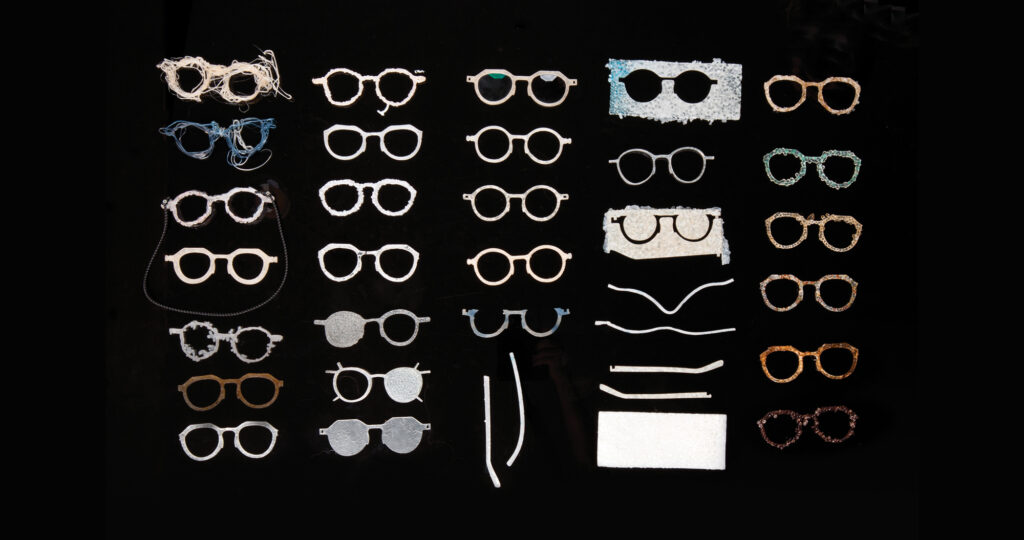
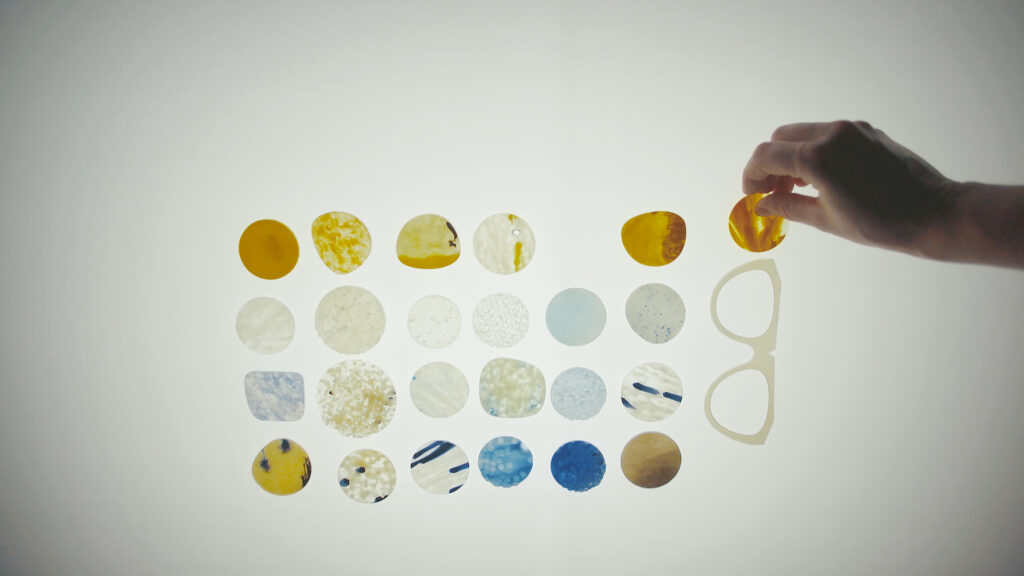
2016년 어느 패셔너블한 아이웨어 제품은 다음과 같은 문구를 내세웠다. “이 안경은 당신보다 오래 살지 않을 겁니다 (This eyewear won’t outlive you.)” 생분해성 플라스틱으로 찍어낸 안경테는 실제로 흙에 묻으면 90일 안에 자연 분해된다. 이 제품 뒤의 실험가들은 슬로바키아의 디자인 스튜디오 ‘크래프팅 플라스틱스!Crafting Plastics!’ (이하 cp!s). 막연히 지속 가능성을 이야기하는 대신, 꼭 필요한 쓰임을 마친 후 완벽하게 폐기되는 과정까지 설계하는 걸 디자인의 역할로 상정한다. cp!s의 디자인 콘셉트와 프로토타입, 디자인과 소재 개발의 중심에는 생태 시스템이 있다. 궁극적인 순환 경제로의 체제 전환을 위해 급진적인 사고방식을 일삼는 이들은 흥미롭게도 신新 플라스틱 시대에 걸맞은 ‘자연스러움’을 이야기한다. 스튜디오가 내륙 지방에 있기 때문에 생분해성 플라스틱 소재로 많이 활용되는 해조류 대신 가장 흔한 옥수수로 플라스틱을 만드는 게 무엇보다 자연스러웠다고 말하는가 하면, 3D 프린터로 뽑아낸 플라스틱 조각물에 후각을 자극하는 향을 피워 가장 자연스러운 상상력으로 새로운 플라스틱을 기억하게 만드는 식이다. 순환 경제 시대에 걸맞은 솔루션을 제안하는 cp!s는 새로운 상상력이란 과연 이성과 몽상의 양극단의 균형에서 비롯된다고 말한다.
In 2016, a fashionable eyewear brand presented this slogan: “This eyewear won’t outlive you.” The frames of the glasses produced with bioplastics actually decompose naturally within 90 days when they are in industrial compost bins. The experimenters behind this product are Slovak design studio Crafting Plastics! (hereinafter “cp!s”). Instead of vaguely talking about sustainability, they assume that the role of design is to design a product, as well as the process from its necessary use to complete disposal. There is an ecological system at the center of the cp!s design concept, prototype, development of design, and materials. Interestingly, while they use a radical mindset to change the system to the ultimate circular economy, they still talk about a naturalness that is suitable for the new plastic era. For example, they say that since the studio is located in a landlocked area, it was more natural to make plastics using the most common corn instead of marine algae, which is often used as bioplastic materials. This novel approach also helps people rethink the way of how we look at plastic through their imagination by burning incense on 3D-printed bioplastic diffusers. For cp!s, which proposes solutions suitable for the era of a circular economy, they believe that new imagination comes from the balance between both extremes of reason and reverie.
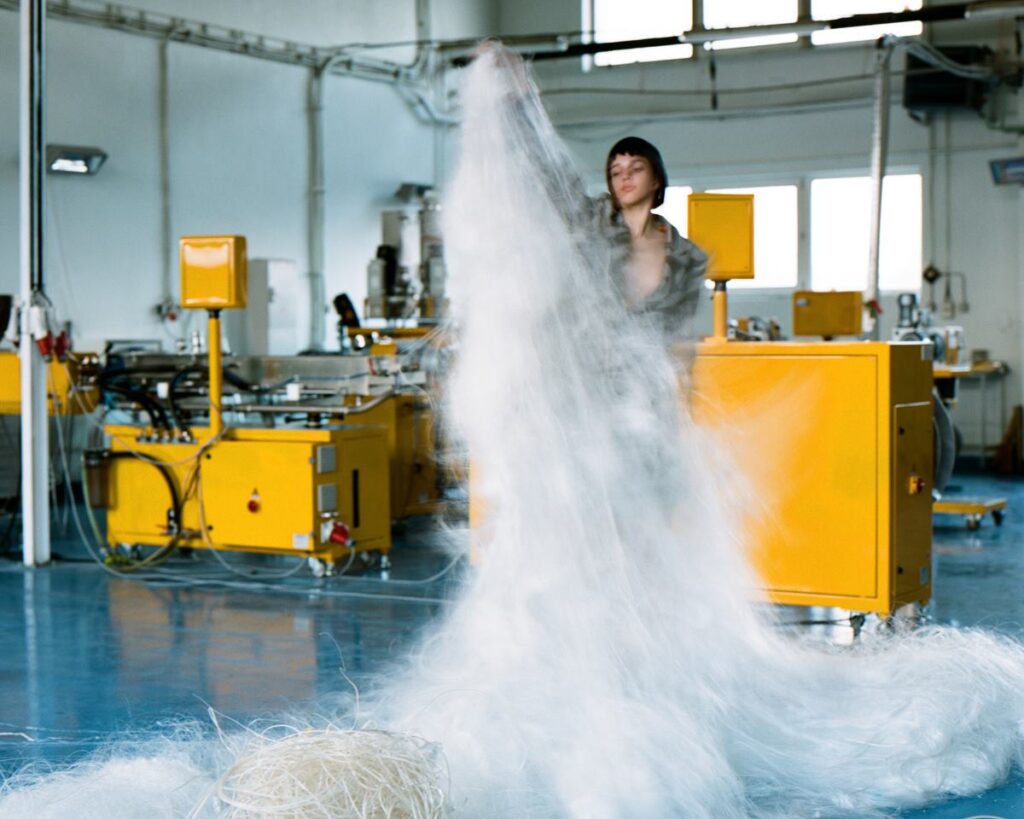
Q1.
순환 경제를 옹호하는 디자이너로서 코로나 시대를 어떤 관점으로 돌파하고 있는지 궁금하다.
모두 앞에 내려진 ‘멈춤’이라는 경고는 분명 지금까지와는 다른 행동 전략을 부추기고 있다. 우리는 그 어느 때보다 가장 생태적인 솔루션을 모색하고 있으며, 시스템의 탈환을 위해서는 구조적인 접근법이 필요하다는 사실을 확인했다. 디자이너로서 우리의 역할은 결국 다양한 규모와 분야에 걸쳐 생태학적인 해결책을 적용하는 여러 선택지를 제시하는 것이다. 이를 통해 산업계와 주요 행위자들이 당장 행동에 나서도록 돕는 것 말이다. 팬데믹은 갖은 고통과 절망을 안겨줬지만, 동시에 개인과 기업이 더욱더 책임 있고 사려 깊은 결정을 고민하는 계기를 마련했다고 본다.
Q1.
As designers who advocate a circular economy, I wonder what kind of perspective you have as you go through the COVID era.
We have all got a “stop” sign which pushes us to rethink further steps and strategies. More, now than ever, people and companies are looking for ecological solutions. However, the pandemic confirmed to us that what is needed is a systematic approach that accelerates the change of the system as a whole. As designers, our role is, after all, to show as many options as possible to implement ecological solutions across the board, and to help navigate the industry and big players to act now. We think that behind all the pain and despair trailing in the wake of this pandemic, it has provided an opportunity to think deeply about more responsible and thoughtful decisions both with individuals and on the corporate level.
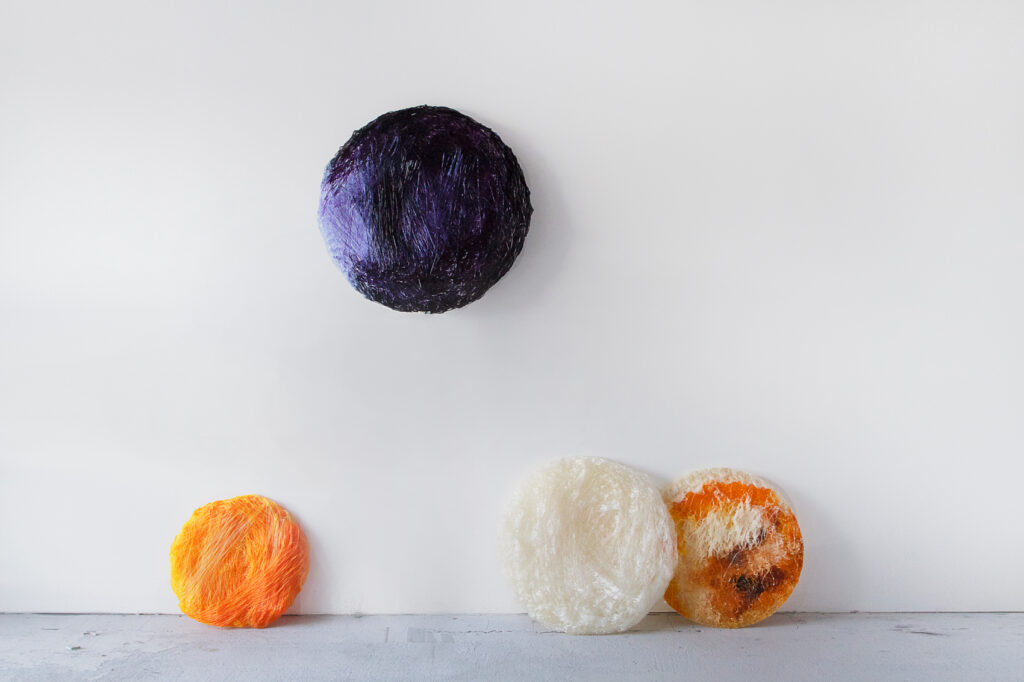
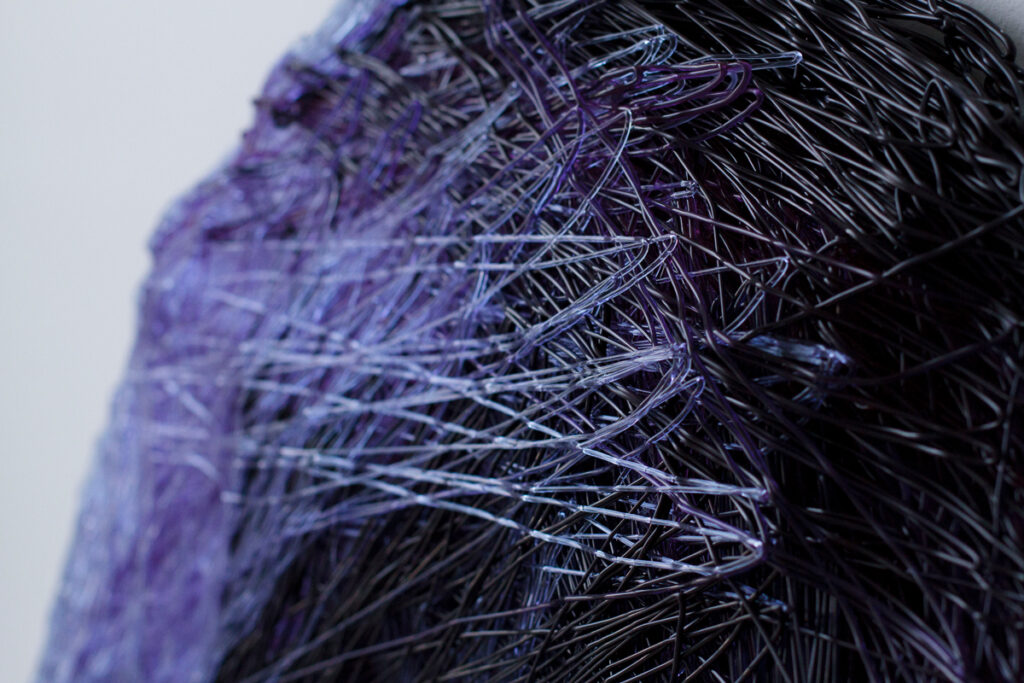
Q2.
cp!s의 작업은 가장 자연스러운 인공물을 표방한다. 특히 ‘친환경’ 하면 떠오르는 재생의 느낌이 아니라, 플라스틱의 강점인 알록달록한 색감을 놓치지 않는 제품들이 신선하다. cp!s가 고집하는 디자인 원칙은 무엇인가?
우리가 행하고 창조하는 모든 것은 책임감과 지속 가능성 측면에서 가장 급진적이어야 한다는 원칙을 따른다. 새로운 자체 프로젝트나 커미션 작업에 임할 때, 우리는 항상 자연적인 원료 그대로의 단일 소재 혹은 두세 가지의 필수적인 바이오 기반 재료의 조합만을 사용하려고 한다. 또한 이미 나와 있는 기존 해결 방식에 기대지 않으려고 노력한다. 최신 바이오 플라스틱의 한계치를 최대한 끌어올려 새로운 부가가치를 더한 응용법을 개발해 접목하는 걸 즐긴다.
Q2.
The work that cp!s advocates has to do with the most natural artifacts. In particular, your products are refreshing because they do not disregard colorful nature, which is one strength of plastics, while not presenting a sense of recycling related to eco-friendliness. What are the design principles that cp!s adheres to?
For us, it is that everything we do and create has to be radical in its responsible and sustainable approach. When developing a new, self-initiated project or a commission, we always try to use either naturally based mono-materials or a combination of 2/3 necessary bio-based materials. Also, we do not want to arrive at standard solutions, but rather push the limits of the newest bioplastic developments to new value-added applications.
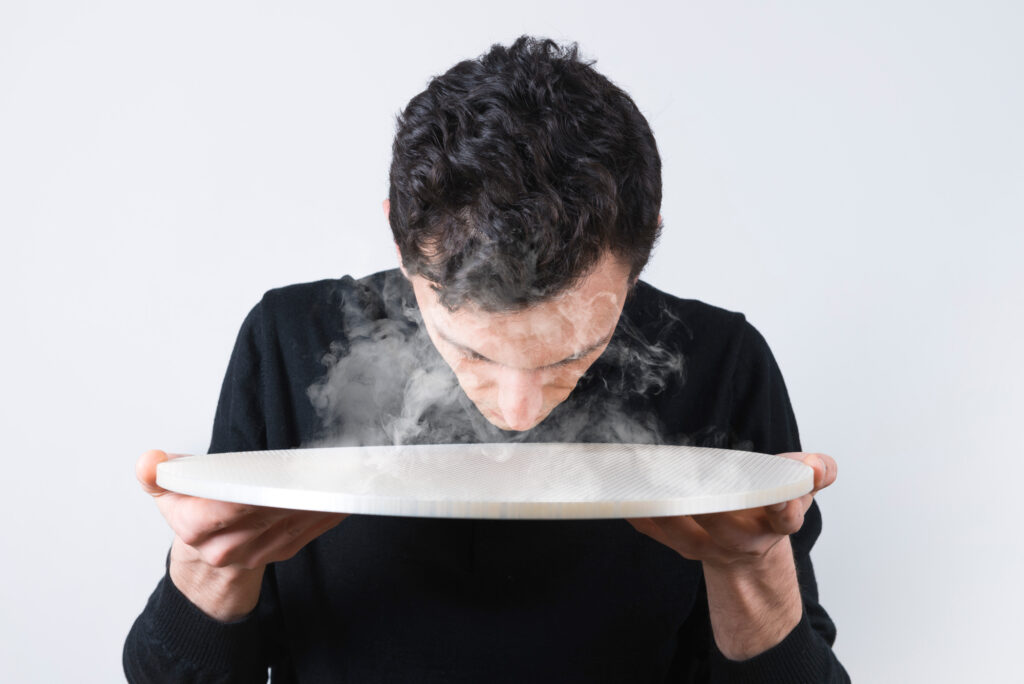
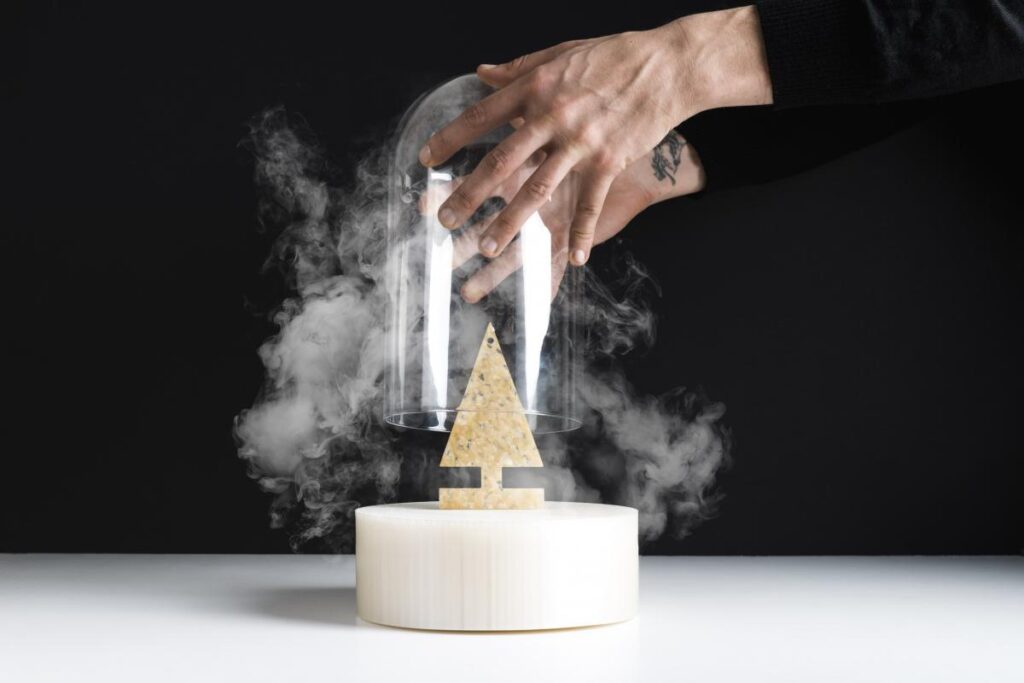
Q3.
2019년 《밀라노 디자인 위크》에서 3D 프린터로 뽑아낸 바이오 플라스틱 조각에 천연 인센스를 피운 디퓨저를 전시해 최신 기술과 경험 디자인을 조합한 바 있다. 기아의 ‘Bold for Nature’와 상응하는 지점이 있어 보이는데?
당시 2여 년에 걸쳐 향기와 바이오 플라스틱이 맺을 수 있는 관계를 지속적으로 탐색했다. 향을 매개로 물체나 공간을 떠올리며 완전히 새로운 경험을 구축할 수 있는 점에 주목했다. 새로운 재료를 개발할 때 향기는 적극적으로 탐구의 대상이 되지 않던 영역이지만, 우리는 향기야말로 뇌의 무수한 영역을 자극할 수 있다고 보았다. ‘지속 가능성의 냄새란 어떤 것일까?’, ‘새로운 천연 플라스틱의 냄새는 어때야 할까?’, ‘인간은 과연 자연 소재와 인조 소재를 향으로 구분해낼 수 있을까?’, ‘바이오 기반의 재료를 사용한 합성물로 새로운 자연을 정의한다면?’ 등 여러 의문점이 떠올랐다. 자연의 복잡다양성을 이해하기 위한 시작점은 분명 모든 감각을 사용하는 것이고, 후각도 그중 하나다.
Q3.
At Milan Design Week 2019, you combined technology with experience design by displaying a 3D-printed bioplastic diffuser with natural incense on it. Doesn’t this partly correspond to Kia’s “Bold for Nature” initiative?
For two years, we have been investigating the relationship between smell and bioplastics. We became aware of the fact that we can build a completely new experience while recalling objects or spaces based on smell. Smell is an unexplored field when thinking about new materials, but we thought scents could open up many parts of our brain. We asked ourselves: What is the smell of sustainability? And how should the new natural plastics smell? Can humans distinguish natural materials from artificial materials through their sense of smell? What if the new natural is made synthetically from bio resources? To be able to understand the complexities of nature again, I think we have to start to use all of our senses, including smell.
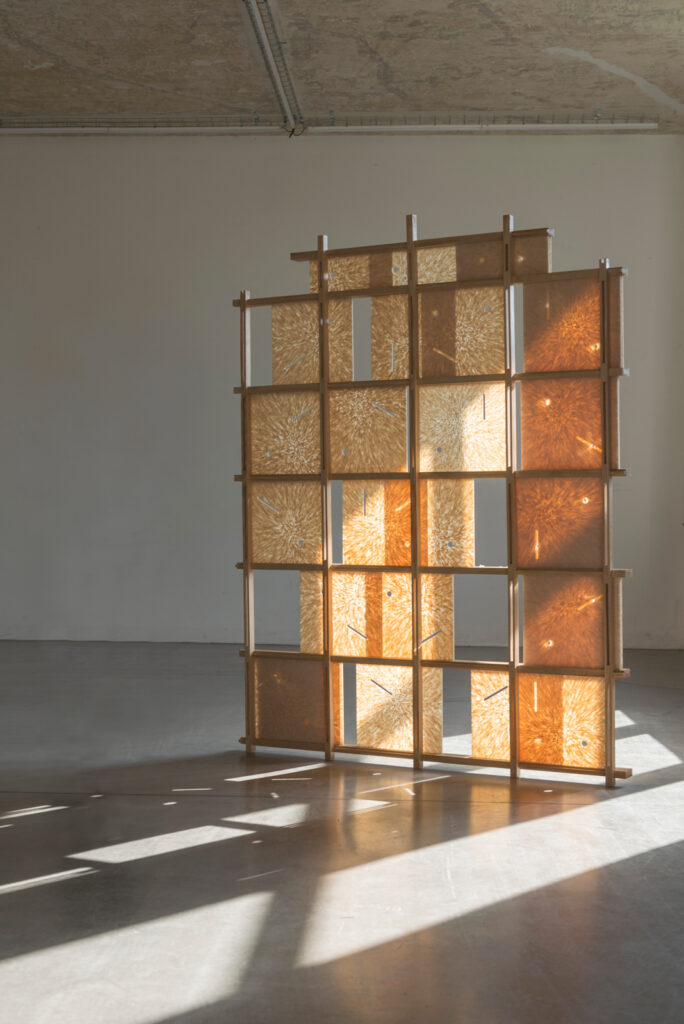
Q4.
열려 있는 동시에 닫혀 있는 공간 구성, 딱딱한 소재에 부드러운 향기를 접목하는 방식 등 보이지 않는 긴장감을 조절하면서 균형감을 탁월하게 포착하는 작업을 선보여 왔다. 이에 기아가 제시하는 ‘Tension for Serenity’가 떠오른다.
사실에 근거한 과학적 탐구와 디자이너의 연구가 세상에 긍정적인 변화를 가져온다는 확신, 이 두 가지 사이의 균형점을 찾는 것은 좋은 디자인을 만드는 과정이자 의미 있고 흥미진진한 일이다. 또 다른 예로, 유일무이하게 존재하는 독특한 작품의 아름다움과 대량으로 생산된 제품이 갖는 시각성 사이에서 진정한 균형을 찾아가는 것 또한 꼽을 수 있겠다. 이러한 균형감이 서로 맞아떨어질 때 생태적 측면에서의 효과 또한 배가될 수 있다.
Q4.
You have shown projects to capture a sense of balance while controlling invisible tension, such as the composition of a space which is open and closed at the same time, and the method of combining soft scents and hard materials. This is reminiscent of Kia’s belief in “Tension for Serenity.”
I think it is meaningful and exciting to strike a balance between the exploration of science—a field based on facts—and the belief that a designer’s research can trigger positive changes in the world. Another example would be pursuing the true balance between the beauty of unique pieces and the visuality of mass-produced products. When these senses of balance coincide, that can actually make a real impact when being ecological.
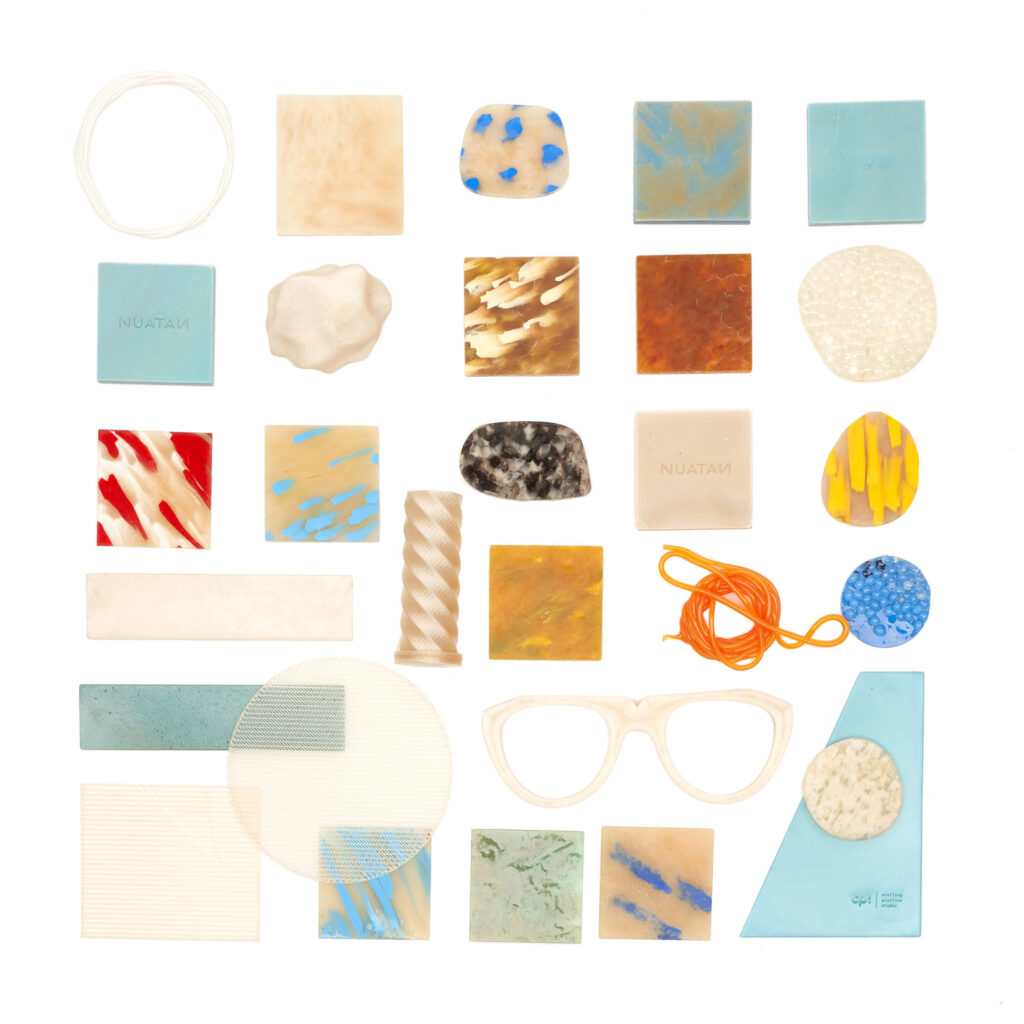
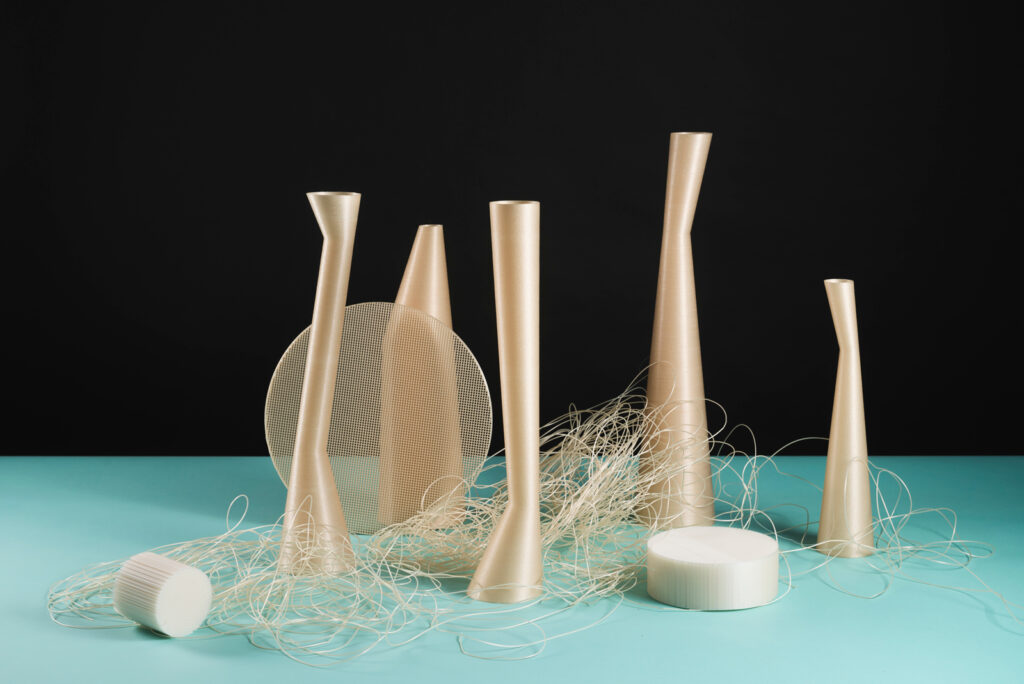
Q5.
기아의 새로운 디자인 철학 ‘Opposites United’를 받치는 5개의 기둥 중 cp!s의 방향성과 일치하는 요소가 있다면?
확실히 적어도 하나 이상과 상응한다. 이를테면, ‘Joy for Reason’은 디자이너로서 동시에 지녀야 할 감성적인 면모와 과학적 합리성 및 논리성을 대변하는 것 같다. 이 둘은 언뜻 상반된 요소로 보이지만 알고 보면 보완적인 관계다. 모든 프로젝트와 실험 과정을 통틀어 우리가 결합하고자 하는 면모이기도 하다. 한 가지 더 꼽는다면 ‘Power to Progress’다. 기술이 주도하는 뛰어난 디자인은 소비자의 언어뿐 아니라 과학의 언어에 대한 이해 또한 갖추고 있어야 한다. 두 언어를 구사하는 역량은 실험실에서부터 우리의 일상에 이르기까지 기능에 대한 사고의 전환을 가능케 한다. 이는 우리의 행동을 유발하며 공감과 관용을 동반한 반학제적이고 비자아적인 접근을 부추긴다. 배가될 수 있다.
Q5.
Given the brief of the five pillars that supplement Kia’s new design philosophy “Opposites United,” which one or ones do you find resonate most with your works?
There is definitely more than one. For example, “Joy for Reason” embodies for us the emotional quality of designers working together with the rationality and logic of science. These two qualities are relatively opposite, but actually, they are complementary. They are what we are trying to combine in every project and process of our practice. There is also another pillar that is important for us: “Power to Progress.” Technology-driven design with attitude requires the understanding of scientific language as well as the everyday language of consumers. The ability to use both languages is necessary for the functional transformation from the laboratory to our everyday lives. This speeds up our action and requires an anti-disciplinary, non-ego approach with both empathy and tolerance.
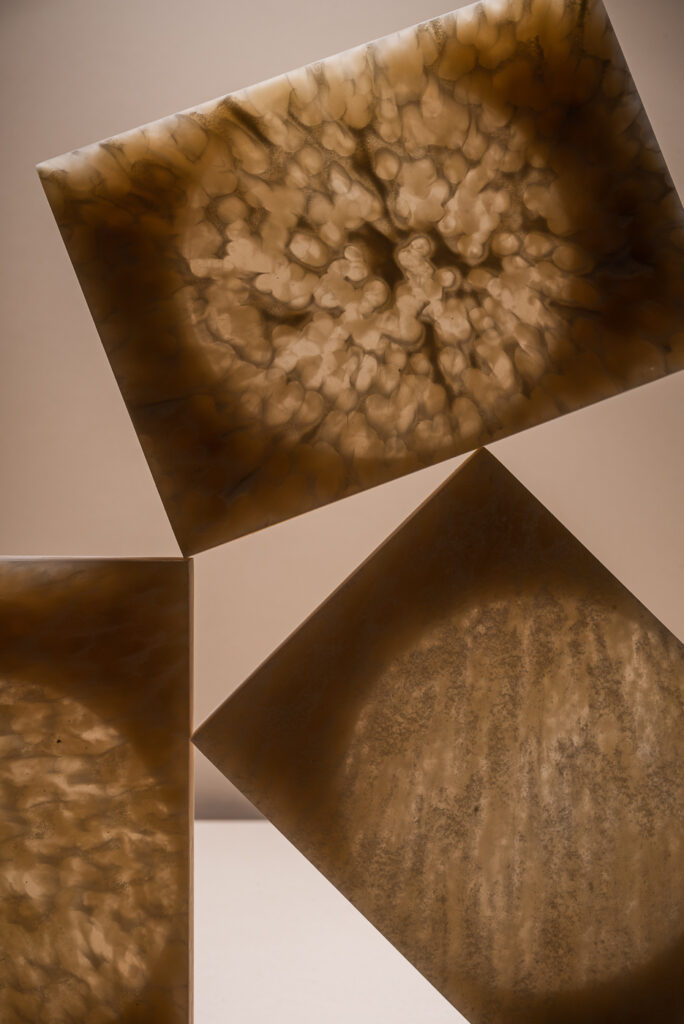
Q6.
Opposites United는 새로운 창조를 위해 사물의 대립하는 성격이나 콘셉트의 대비를 활용하는 관점과 태도를 아우르는 개념이다. 다름에서 오는 불확실성이나 긴장감을 긍정적인 창조의 원천으로 바라보는 것인데, 혹 즉각적으로 떠오르는 대상이 있다면?
있다! 우리가 함께 일하는 것 그 자체다. 쿠부쇼바는 지극히 이성적인 사람이고 크랄은 몽상가다. 우리의 협업이 예상치 못하면서 바라건대 부디 의미 있는 결과물을 도출해 낼 수 있기를 늘 바랄 뿐이다.
Q6.
Opposites United is a perspective and an attitude that utilizes a contrast between objects and concepts that are eventually opposed to creating new ideas. It views uncertainties or tensions arising from differences as a source of positive creation. Is there any immediate image or concept that comes to mind when you heard the slogan for the first time?
Yes! We are working together. Kubušová is the rational; Král is the dreamer. Within this collaboration, we always hope something unexpected (and hopefully meaningful) comes about.
진행·정리 김은아
프리랜스 에디터. 《매거진B》, 《월간 디자인》에서 일하며 밀라노, 도쿄, 스톡홀롬 등을 방문해 동시대 크리에이터를 관찰하고 예술가, 건축가, 디자이너, 기업가 등을 인터뷰했다.
Interview & StoryKim Eunah
Kim is a freelance editor. She has been to many cities around the world, including Milan, Tokyo, and Stockholm, to observe contemporary creators in different fields, and interviewed artists, architects, designers, and businesspeople while working for Magazine B and Monthly Design.